结论旗舰级Android 平板电脑体验,中等价位
Oppo 推出的这款全新高端平板电脑采用高品质设计,是名副其实的多面手。凭借其 13.2 英寸大屏幕和快速的骁龙 8 Elite SoC,Oppo Pad 4 Pro 在中端市场上具有很强的购买力。在这一细分市场上,它几乎没有竞争对手,或者说,三星Galaxy Tab S10 Ultra 和 iPad Pro 13 等替代产品都属于高端产品。
与竞争对手的 OLED 产品相比,Oppo Pad 4 Pro 的液晶显示屏在对比度方面有一定的劣势,但无 PMW 显示屏和高分辨率无疑是其优点;敏感用户尤其可以放心使用这款 OPPO 平板电脑。
此外,即使没有 OLED 显示屏,对于大型平板电脑来说,功耗也非常低。
鉴于 Oppo 平板电脑的价格,真正值得批评的地方并不多。
不过,有一个硬件缺陷仍然令人费解,而且在日常使用中可能会让人感到相当沮丧:那就是指纹传感器的缺失。在我们使用该设备的过程中,现有的面部解锁功能在 Pad 4 Pro 上的表现相当糟糕,与传统的指纹传感器相比也不那么安全。
此外,5G 和 GNSS 功能的缺失以及手掌识别方面的问题也让人有很多不满意的地方。
Pros
Cons
价格和供应情况
Oppo Pad 4 Pro 目前仅在中国发布。8 GB 内存和 256 GB 存储空间的起售价为 3299 日元(约合 400 欧元)。
在我们的租赁合作伙伴 Trading Shenzhen,Oppo Pad 4 Pro 的起价约为 520 欧元。与同类产品类似,OnePlus Pad 2 Pro的前身,似乎很有可能在欧洲上市。这两款平板电脑的前身都是在全球发布的。
不过,Oppo 尚未确认这两款平板电脑在欧洲的上市时间和价格。
Table of Contents
- 结论旗舰级Android 平板电脑体验,中等价位
- Oppo Pad 4 Pro 的规格
- 外壳玻璃-铝结构,边缘纤薄
- 功能特点超大平板电脑,带 USB 3.2 接口
- 软件:ColorOS 15 基于Android 15,提供七年更新
- 通信和全球导航卫星系统:没有 5G 和导航
- 摄像头光线良好时可拍摄 1300 万像素照片
- 附件和保修:包装盒内附带 67 W 适配器
- 输入设备和操作:OPPO 少走了一些弯路
- 显示屏明亮的 13.2 英寸 144 Hz LTPS 面板,无 PWM
- 性能:旗舰级高通 SoC 对决Apple M3
- 游戏大平板电脑 = 大游戏乐趣?
- 排放:Oppo Pad 4 Pro 保持冷静
- 能源管理:功耗低,电池寿命长
- Notebookcheck 对 Oppo Pad 4 Pro 的印象
- Potential competitors in comparison
Oppo Pad 4 Pro 的直接竞争对手是 Apple iPad Pro 13和 iPad Air 13.这是因为 Pad 4 Pro 配备了旗舰级的 高通骁龙 8 EliteSoC 处理器、最高 16 GB 内存和 512 GB 存储空间,外形尺寸与 iPad Pro 和 iPad Air 相似。
与 三星Galaxy Tab S10 Ultra 不同、不同的是,Oppo Pad 4 Pro 的显示屏长宽比为 7:5,相当于一张 A4 纸。
此外,用户还可以选配带触控板和触控笔的键盘保护套,将 Pad 4 Pro 转换为工作机。
Oppo Pad 4 Pro 的规格
外壳玻璃-铝结构,边缘纤薄
Oppo Pad 4 Pro 的外壳由玻璃和铝制成,在视觉和触觉方面都给人留下了深刻的印象。
金属一体成型结构确保 Pad 4 Pro 可以轻松承受轻微的扭转。磨砂表面可以很好地隐藏指纹。
遗憾的是,这款中端平板电脑缺乏防尘或防水的特殊认证。
Oppo Pad 4 Pro 配备了 13.2 英寸的大显示屏,但这样的尺寸很难让人舒适地单手握持,尤其是 Pad 4 Pro 的重量比 华为 MatePad Pro 13.2.
Pad 4 Pro 的厚度不到 6 毫米,非常纤薄,散发着高级感。
LTPS 面板的屏占比超过 87%,边框对于平板电脑来说非常薄。
从这个角度来看 iPad Air 13的屏占比仅为 86%。
尽管如此,Oppo 并未明确透露任何有关所使用的保护玻璃的信息。
» Notebookcheck多媒体笔记本电脑Top 10排名
» Notebookcheck游戏笔记本电脑Top 10排名
» Notebookcheck低价办公/商务笔记本电脑Top 10排名
» Notebookcheck高端办公/商务笔记本电脑Top 10排名
» Notebookcheck工作站笔记本电脑Top 10排名
» Notebookcheck亚笔记本电脑Top 10排名
» Notebookcheck超级本产品Top 10排名
» Notebookcheck变形本产品Top 10排名
» Notebookcheck平板电脑Top 10排名
» Notebookcheck智能手机Top 10排名
» Notebookcheck评测过最出色的笔记本电脑屏幕
» Notebookcheck售价500欧元以下笔记本电脑Top 10排名
» Notebookcheck售价300欧元以下笔记本电脑Top 10排名
功能特点超大平板电脑,带 USB 3.2 接口
奥普推出的 Pad 4 Pro 平板电脑配备 8 GB、12 GB 或 16 GB 内存选项,以及 256 GB 和 512 GB 内部存储空间。
内存容量较小的 SKU 指定使用 UFS 4.0 存储和 LPDDR5x-4266 内存,而 16 GB 选项则使用较新的 LPDDR5T-4800。
遗憾的是,Pad 4 Pro 不支持存储扩展,也不提供 3.5 毫米耳机插孔。
Pad 4 Pro 配备了快速 USB 3.2 Gen 1 Type-C 端口,这与其价格相称。该端口的理论数据传输速率高达 5 GBit/s,借助 DisplayPort 适配器还可用作外接显示器的显示信号输出端口。
背面还有三个接触点,用于连接 505 g 智能触摸键盘保护套。
软件:ColorOS 15 基于Android 15,提供七年更新
按照 OPPO 的一贯风格,底层Android 15 操作系统与该公司自己的 ColorOS 15 用户界面相结合。测试期间的安全补丁一直更新到 2025 年 4 月。
由于Oppo尚未在Oppo安全中心正式发布Pad 4 Pro,因此有关Oppo为中国版平板电脑提供软件支持的计划仍存在疑问。
长期软件维护 Galaxy Tab S10 Ultra 那样的长期软件维护,Oppo 不太可能为 Pad 4 Pro 提供。中国版本更有可能获得四到五年的更新。
如果 Pad 4 Pro 真的在欧洲上市,它将受到欧盟新法规的限制,这意味着至少可以预期到 2031 年。
值得一提的是,Pad 4 Pro 兼容Apple 设备,如 MacBook Pro共享照片或文件。通过 O+ Connect 应用程序,Pad 4 Pro 还可以作为外置多点触摸屏使用。
无界视图 "功能尤其实用,可跨显示屏边界同时使用三个应用程序。
可持续性
在实现可持续发展目标的透明度方面,Oppo 肯定还有很多工作要做。
遗憾的是,没有关于所用回收材料数量的具体信息。此外,也没有关注用户的可修复性,要验证这方面的信息几乎是不可能的。
Pad 4 Pro 的包装没有使用塑料,而是用大豆油油墨印刷的。根据公司的可持续发展报告,包装使用的纤维中有 45% 是由回收材料制成的。
通信和全球导航卫星系统:没有 5G 和导航
虽然 Pad 4 Pro 支持最新的 Wi-Fi 7 协议,但它不支持使用快速的 6 GHz 频段进行 Wi-Fi 传输。
与我们的参考产品华硕 ROG Rapture GT-AXE11000 路由器配合使用时,Oppo 平板电脑只能在 2.4 GHz 和 5 GHz 频段内进行连接,不过由于在 5 GHz 频段内使用了 VHT160,我们的 Wi-Fi 6E 路由器仍能实现高速传输。
我们测得的峰值接收速率超过 1,800 Mbps。但是,我们在发射时却远远低于这个速度。
Pad 4 Pro 没有用于确定位置的 GNSS 模块,因此只能通过已知的 Wi-Fi 网络大致估算定位。这款来自 Oppo 的高端平板电脑也没有蜂窝模块。
| Networking | |
| Oppo Pad 4 Pro | |
| iperf3 transmit AXE11000 | |
| iperf3 receive AXE11000 | |
| Samsung Galaxy Tab S10 Ultra | |
| iperf3 transmit AXE11000 | |
| iperf3 receive AXE11000 | |
| iperf3 transmit AXE11000 6GHz | |
| iperf3 receive AXE11000 6GHz | |
| Apple iPad Air 13 2025 | |
| iperf3 transmit AXE11000 6GHz | |
| iperf3 receive AXE11000 6GHz | |
| Huawei MatePad Pro 13.2 (2025) | |
| iperf3 transmit AXE11000 | |
| iperf3 receive AXE11000 | |
| Lenovo Yoga Tab Plus | |
| iperf3 transmit AXE11000 6GHz | |
| iperf3 receive AXE11000 6GHz | |
| Average 802.11 a/b/g/n/ac/ax/be | |
| iperf3 transmit AXE11000 | |
| iperf3 receive AXE11000 | |
| iperf3 transmit AXE11000 6GHz | |
| iperf3 receive AXE11000 6GHz | |
| Average of class Tablet | |
| iperf3 transmit AXE11000 | |
| iperf3 receive AXE11000 | |
| iperf3 transmit AXE11000 6GHz | |
| iperf3 receive AXE11000 6GHz | |
摄像头光线良好时可拍摄 1300 万像素照片
Image comparison
Choose a scene and navigate within the first image. One click changes the position on touchscreens. One click on the zoomed-in image opens the original in a new window. The first image shows the scaled photograph of the test device.
Main cameraMain cameraLow light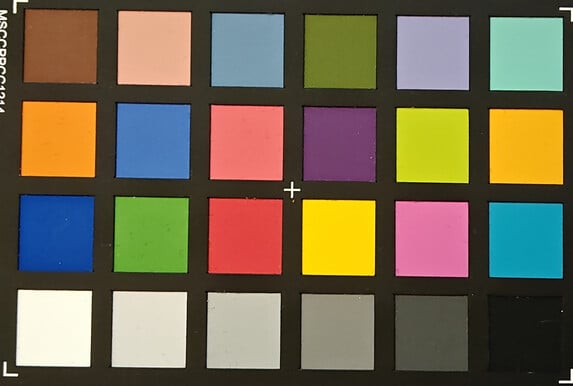

附件和保修:包装盒内附带 67 W 适配器
供货范围包括一个 67 W 快速充电电源适配器、一条 USB Type-A 转 Type-C 数据和充电线以及中文信息资料。
我们的租赁合作伙伴深圳贸易公司还为中国充电器捆绑了一个欧盟适配器和一个 USB OTG 适配器。
作为 Pad 4 Pro 的额外配件,Oppo 提供了配套的 Pencil 2 Pro,售价约 100 欧元,可选键盘盖售价 130 欧元。
我们的进口设备享有 12 个月保修。.如果需要保修,Trading Shenzhen 可以选择将平板电脑寄往德国的收货地址。
输入设备和操作:OPPO 少走了一些弯路
13.2 英寸 LTPS 面板采用 540 Hz 采样率,可快速、准确地实现触摸输入。不过,Pad 4 Pro 的触摸屏每秒只能扫描 120 次可能的触摸。
得益于 144 Hz 的高刷新率,ColorOS 界面上的动画显得非常流畅。
Pad 4 Pro 的 7:5 长宽比与一张 A4 纸和 iPad Air 13 的长宽比相似。 iPad Air 13 相比,例如 Galaxy 平板电脑相比。
因此,与传统的 16:9 面板相比,Pad 4 Pro 的长宽比提供了更宽的可视区域,这对于阅读文件或上网冲浪尤其有利。
Pad 4 Pro 兼容 OPPO 的 Pencil 2 Pro,重约 15 克,据称能分辨超过 16000 级压力。这样就可以使用 Oppo 平板电脑手写笔记和素描。
制造商宣称的 2 毫秒延迟在同类产品中名列前茅。遗憾的是,我们没有收到 Pencil 2 Pro 的测试样品来检验这些说法。
值得注意的是,这款中端平板电脑没有振动电机。也没有指纹扫描仪。我们实在无法理解为什么 OPPO 要在这里偷工减料。
生物识别只能通过前置摄像头进行人脸识别。在测试中,即使在光线条件良好的情况下,2D 人脸识别功能也无法让我们信服。 做得更好.这种方法也被认为不如指纹识别安全。
此外,掌纹识别功能还需要在软件方面进行优化,这样才不会阻碍手写笔或手指的输入。在测试时,Pad 4 Pro 上的这一功能并不稳定。
显示屏明亮的 13.2 英寸 144 Hz LTPS 面板,无 PWM
Pad 4 Pro 采用 13.2 英寸 LTPS 面板,可自适应地将帧速率从 144 Hz 降至 60 Hz。屏幕分辨率为 3,392 x 2,400 ,像素密度高达 315 PPI,超过了 300 PPi 的 "魔力 "极限。相比之下,iPad iPad Pro 13的像素密度仅为 264 PPI。
OPPO 声称最大亮度为 600 cd/m²,我们可以在纯白背景下确认这一点。在平均图像电平(APL)18 下,液晶屏达到了 903 cd/m² 的高亮度,与宣传的 900 尼特峰值亮度相匹配。虽然对于 HDR 内容来说并不完美,但亮度足以带来良好的观看体验。
在我们的测量中,12 位面板没有检测到任何 PWM 闪烁,这对于对屏幕闪烁敏感的用户来说是一个真正的优势。
| |||||||||||||||||||||||||
Brightness Distribution: 93 %
Center on Battery: 672 cd/m²
Contrast: 1461:1 (Black: 0.46 cd/m²)
ΔE ColorChecker Calman: 3.18 | ∀{0.5-29.43 Ø4.78}
ΔE Greyscale Calman: 2.2 | ∀{0.09-98 Ø5}
97.1% sRGB (Calman 2D)
Gamma: 2.396
CCT: 7070 K
| Oppo Pad 4 Pro LTPS LCD, 3392x2400, 13.2" | Samsung Galaxy Tab S10 Ultra AMOLED 2X, 2960x1848, 14.6" | Apple iPad Air 13 2025 IPS, 2732x2048, 12.9" | Huawei MatePad Pro 13.2 (2025) Flexible OLED, 2880x1920, 13.2" | Lenovo Yoga Tab Plus IPS, 2944x1840, 12.7" | |
|---|---|---|---|---|---|
| Screen | 3% | 3% | 27% | -8% | |
| Brightness middle (cd/m²) | 672 | 605 -10% | 607 -10% | 795 18% | 726 8% |
| Brightness (cd/m²) | 652 | 603 -8% | 576 -12% | 791 21% | 691 6% |
| Brightness Distribution (%) | 93 | 98 5% | 87 -6% | 97 4% | 91 -2% |
| Black Level * (cd/m²) | 0.46 | 0.5 -9% | 0.55 -20% | ||
| Contrast (:1) | 1461 | 1214 -17% | 1320 -10% | ||
| Colorchecker dE 2000 * | 3.18 | 2.6 18% | 1.52 52% | 1.1 65% | 4.67 -47% |
| Colorchecker dE 2000 max. * | 4.84 | 5.4 -12% | 3.5 28% | 2.5 48% | 5.6 -16% |
| Greyscale dE 2000 * | 2.2 | 1.6 27% | 2.2 -0% | 2.1 5% | 1.8 18% |
| Gamma | 2.396 92% | 2.08 106% | 2.197 100% | 2.23 99% | 2.249 98% |
| CCT | 7070 92% | 6405 101% | 6929 94% | 6822 95% | 6382 102% |
* ... smaller is better
Screen Flickering / PWM (Pulse-Width Modulation)
| Screen flickering / PWM not detected | |||
In comparison: 53 % of all tested devices do not use PWM to dim the display. If PWM was detected, an average of 8142 (minimum: 5 - maximum: 343500) Hz was measured. | |||
Display Response Times
| ↔ Response Time Black to White | ||
|---|---|---|
| 15.1 ms ... rise ↗ and fall ↘ combined | ↗ 10.4 ms rise | |
| ↘ 4.7 ms fall | ||
| The screen shows good response rates in our tests, but may be too slow for competitive gamers. In comparison, all tested devices range from 0.1 (minimum) to 240 (maximum) ms. » 35 % of all devices are better. This means that the measured response time is better than the average of all tested devices (20.2 ms). | ||
| ↔ Response Time 50% Grey to 80% Grey | ||
| 30.6 ms ... rise ↗ and fall ↘ combined | ↗ 20.4 ms rise | |
| ↘ 10.2 ms fall | ||
| The screen shows slow response rates in our tests and will be unsatisfactory for gamers. In comparison, all tested devices range from 0.165 (minimum) to 636 (maximum) ms. » 40 % of all devices are better. This means that the measured response time is similar to the average of all tested devices (31.7 ms). | ||
性能:旗舰级高通 SoC 对决Apple M3
Oppo Pad 4 Pro 配备了 骁龙 8 精英芯片,这在中端价位产品中是相当出色的。与 OPPO Find N5相比,Pad 4 Pro 并没有使用配备 7 个 Oryon Gen 2 性能核心的 8 Elite 芯片,而是使用了配备 6 个核心的精简版芯片。
在 Geekbench 测试中,Pad 4 Pro 的性能甚至超过了 Galaxy Tab S10 Ultra.iPad iPad Air 13配备了 M3 芯片的单核数据也无法与 Pad 4 Pro 相提并论。
尽管如此,在人工智能测试和系统基准测试中,Oppo 桌子的性能还是相当弱。
| UL Procyon AI Inference for Android - Overall Score NNAPI | |
| Samsung Galaxy Tab S10 Ultra | |
| Lenovo Yoga Tab Plus | |
| Oppo Pad 4 Pro | |
| Average Qualcomm Snapdragon 8 Elite (8865 - 22767, n=17) | |
| Average of class Tablet (2597 - 76852, n=62, last 2 years) | |
| Huawei MatePad Pro 13.2 (2025) | |
集成的 Adreno 830图形处理器非常强大。在苛刻的层级测试中,它的性能超过了 Immortalis-G720的 Tab S10 Ultra即使在高 4K 分辨率下,也能达到稳定的 44 帧/秒。
Adreno 830 的性能往往比 iPad Air 13 的性能高出 30% 以上。 iPad Air 13的 M3 芯片尽管Apple 平板电脑需要处理的像素要少得多。
GFXBench (DX / GLBenchmark) 2.7: T-Rex Onscreen | 1920x1080 T-Rex Offscreen
GFXBench 3.0: on screen Manhattan Onscreen OGL | 1920x1080 1080p Manhattan Offscreen
GFXBench 3.1: on screen Manhattan ES 3.1 Onscreen | 1920x1080 Manhattan ES 3.1 Offscreen
GFXBench: on screen Car Chase Onscreen | 1920x1080 Car Chase Offscreen | on screen Aztec Ruins High Tier Onscreen | 2560x1440 Aztec Ruins High Tier Offscreen | on screen Aztec Ruins Normal Tier Onscreen | 1920x1080 Aztec Ruins Normal Tier Offscreen | 3840x2160 4K Aztec Ruins High Tier Offscreen
| 3DMark / Wild Life Extreme Unlimited | |
| Oppo Pad 4 Pro | |
| Samsung Galaxy Tab S10 Ultra | |
| Apple iPad Air 13 2025 | |
| Lenovo Yoga Tab Plus | |
| Huawei MatePad Pro 13.2 (2025) | |
| 3DMark / Wild Life Extreme | |
| Apple iPad Air 13 2025 | |
| Oppo Pad 4 Pro | |
| Samsung Galaxy Tab S10 Ultra | |
| Lenovo Yoga Tab Plus | |
| Huawei MatePad Pro 13.2 (2025) | |
| 3DMark / Wild Life Unlimited Score | |
| Oppo Pad 4 Pro | |
| Samsung Galaxy Tab S10 Ultra | |
| Huawei MatePad Pro 13.2 (2025) | |
| 3DMark / Solar Bay Score | |
| Oppo Pad 4 Pro | |
| Apple iPad Air 13 2025 | |
| Samsung Galaxy Tab S10 Ultra | |
| Lenovo Yoga Tab Plus | |
| 3DMark / Solar Bay Unlimited Score | |
| Oppo Pad 4 Pro | |
| Apple iPad Air 13 2025 | |
| Samsung Galaxy Tab S10 Ultra | |
| Lenovo Yoga Tab Plus | |
| 3DMark / Steel Nomad Light Unlimited Score | |
| Oppo Pad 4 Pro | |
| Apple iPad Air 13 2025 | |
| Samsung Galaxy Tab S10 Ultra | |
| Lenovo Yoga Tab Plus | |
| Huawei MatePad Pro 13.2 (2025) | |
| 3DMark / Steel Nomad Light Score | |
| Oppo Pad 4 Pro | |
| Apple iPad Air 13 2025 | |
| Samsung Galaxy Tab S10 Ultra | |
| Lenovo Yoga Tab Plus | |
| Huawei MatePad Pro 13.2 (2025) | |
| GFXBench (DX / GLBenchmark) 2.7 / T-Rex Onscreen | |
| Samsung Galaxy Tab S10 Ultra | |
| Lenovo Yoga Tab Plus | |
| Apple iPad Air 13 2025 | |
| Huawei MatePad Pro 13.2 (2025) | |
| Oppo Pad 4 Pro | |
| GFXBench (DX / GLBenchmark) 2.7 / T-Rex Offscreen | |
| Samsung Galaxy Tab S10 Ultra | |
| Oppo Pad 4 Pro | |
| Apple iPad Air 13 2025 | |
| Lenovo Yoga Tab Plus | |
| Huawei MatePad Pro 13.2 (2025) | |
| GFXBench 3.0 / Manhattan Onscreen OGL | |
| Samsung Galaxy Tab S10 Ultra | |
| Lenovo Yoga Tab Plus | |
| Apple iPad Air 13 2025 | |
| Oppo Pad 4 Pro | |
| Huawei MatePad Pro 13.2 (2025) | |
| GFXBench 3.0 / 1080p Manhattan Offscreen | |
| Oppo Pad 4 Pro | |
| Apple iPad Air 13 2025 | |
| Lenovo Yoga Tab Plus | |
| Samsung Galaxy Tab S10 Ultra | |
| Huawei MatePad Pro 13.2 (2025) | |
| GFXBench 3.1 / Manhattan ES 3.1 Onscreen | |
| Samsung Galaxy Tab S10 Ultra | |
| Lenovo Yoga Tab Plus | |
| Apple iPad Air 13 2025 | |
| Oppo Pad 4 Pro | |
| Huawei MatePad Pro 13.2 (2025) | |
| GFXBench 3.1 / Manhattan ES 3.1 Offscreen | |
| Oppo Pad 4 Pro | |
| Lenovo Yoga Tab Plus | |
| Samsung Galaxy Tab S10 Ultra | |
| Apple iPad Air 13 2025 | |
| Huawei MatePad Pro 13.2 (2025) | |
| GFXBench / Car Chase Onscreen | |
| Samsung Galaxy Tab S10 Ultra | |
| Lenovo Yoga Tab Plus | |
| Apple iPad Air 13 2025 | |
| Oppo Pad 4 Pro | |
| Huawei MatePad Pro 13.2 (2025) | |
| GFXBench / Car Chase Offscreen | |
| Oppo Pad 4 Pro | |
| Apple iPad Air 13 2025 | |
| Samsung Galaxy Tab S10 Ultra | |
| Lenovo Yoga Tab Plus | |
| Huawei MatePad Pro 13.2 (2025) | |
| GFXBench / Aztec Ruins High Tier Onscreen | |
| Samsung Galaxy Tab S10 Ultra | |
| Lenovo Yoga Tab Plus | |
| Apple iPad Air 13 2025 | |
| Oppo Pad 4 Pro | |
| Huawei MatePad Pro 13.2 (2025) | |
| GFXBench / Aztec Ruins High Tier Offscreen | |
| Oppo Pad 4 Pro | |
| Samsung Galaxy Tab S10 Ultra | |
| Apple iPad Air 13 2025 | |
| Lenovo Yoga Tab Plus | |
| Huawei MatePad Pro 13.2 (2025) | |
| GFXBench / Aztec Ruins Normal Tier Onscreen | |
| Samsung Galaxy Tab S10 Ultra | |
| Lenovo Yoga Tab Plus | |
| Apple iPad Air 13 2025 | |
| Oppo Pad 4 Pro | |
| Huawei MatePad Pro 13.2 (2025) | |
| GFXBench / Aztec Ruins Normal Tier Offscreen | |
| Oppo Pad 4 Pro | |
| Samsung Galaxy Tab S10 Ultra | |
| Apple iPad Air 13 2025 | |
| Lenovo Yoga Tab Plus | |
| Huawei MatePad Pro 13.2 (2025) | |
| GFXBench / 4K Aztec Ruins High Tier Offscreen | |
| Oppo Pad 4 Pro | |
| Samsung Galaxy Tab S10 Ultra | |
| Apple iPad Air 13 2025 | |
| Lenovo Yoga Tab Plus | |
| Huawei MatePad Pro 13.2 (2025) | |
Pad 4 Pro 在浏览器速度测试中表现出色,基准测试结果也相当不错。
在日常使用中,网站打开速度很快,滚动浏览也很流畅。
| Jetstream 2 - 2.0 Total Score | |
| Apple iPad Air 13 2025 (Safari 18) | |
| Lenovo Yoga Tab Plus (Chrome 132) | |
| Average Qualcomm Snapdragon 8 Elite (75.1 - 329, n=17) | |
| Oppo Pad 4 Pro (Chrome 135) | |
| Samsung Galaxy Tab S10 Ultra (Chrome 130) | |
| Huawei MatePad Pro 13.2 (2025) (Chrome 134) | |
| Average of class Tablet (22.3 - 395, n=66, last 2 years) | |
| Speedometer 3 - Score 3.0 | |
| Apple iPad Air 13 2025 (Safari 18) | |
| Average Qualcomm Snapdragon 8 Elite (15.3 - 36.8, n=16) | |
| Lenovo Yoga Tab Plus (Chrome 132) | |
| Oppo Pad 4 Pro (Chrome 135) | |
| Huawei MatePad Pro 13.2 (2025) (Chrome 134) | |
| Samsung Galaxy Tab S10 Ultra (Chrome 130) | |
| Average of class Tablet (1.25 - 49.1, n=63, last 2 years) | |
| WebXPRT 4 - Overall | |
| Samsung Galaxy Tab S10 Ultra (Chrome 130) | |
| Oppo Pad 4 Pro (Chrome 135) | |
| Huawei MatePad Pro 13.2 (2025) (Chrome 134) | |
| Average Qualcomm Snapdragon 8 Elite (102 - 255, n=17) | |
| Lenovo Yoga Tab Plus (Chrome 132) | |
| Average of class Tablet (26 - 376, n=71, last 2 years) | |
| Octane V2 - Total Score | |
| Apple iPad Air 13 2025 (Safari 18) | |
| Samsung Galaxy Tab S10 Ultra (Chrome 130) | |
| Average Qualcomm Snapdragon 8 Elite (25448 - 95506, n=24) | |
| Lenovo Yoga Tab Plus (Chrome 132) | |
| Oppo Pad 4 Pro (Chrome 135) | |
| Huawei MatePad Pro 13.2 (2025) (Chrome 134) | |
| Average of class Tablet (763 - 138481, n=95, last 2 years) | |
| Mozilla Kraken 1.1 - Total | |
| Average of class Tablet (243 - 27101, n=80, last 2 years) | |
| Oppo Pad 4 Pro (Chrome 135) | |
| Samsung Galaxy Tab S10 Ultra (Chrome 130) | |
| Huawei MatePad Pro 13.2 (2025) (Chrome 134) | |
| Lenovo Yoga Tab Plus (Chrome 132) | |
| Average Qualcomm Snapdragon 8 Elite (383 - 1170, n=19) | |
| Apple iPad Air 13 2025 (Safari 18) | |
* ... smaller is better
| Oppo Pad 4 Pro | Samsung Galaxy Tab S10 Ultra | Huawei MatePad Pro 13.2 (2025) | Lenovo Yoga Tab Plus | Average 256 GB UFS 4.0 Flash | Average of class Tablet | |
|---|---|---|---|---|---|---|
| AndroBench 3-5 | 18% | -12% | -10% | 7% | -38% | |
| Sequential Read 256KB (MB/s) | 3801.54 | 3912.45 3% | 1864.54 -51% | 3868 2% | 3664 ? -4% | 1761 ? -54% |
| Sequential Write 256KB (MB/s) | 3334.62 | 2963.58 -11% | 1441.8 -57% | 3047.6 -9% | 2701 ? -19% | 1309 ? -61% |
| Random Read 4KB (MB/s) | 297.28 | 342.97 15% | 305.89 3% | 241.2 -19% | 381 ? 28% | 243 ? -18% |
| Random Write 4KB (MB/s) | 335.89 | 554.76 65% | 533.47 59% | 290.9 -13% | 405 ? 21% | 277 ? -18% |
游戏大平板电脑 = 大游戏乐趣?
排放:Oppo Pad 4 Pro 保持冷静
温度
由于散热表面积大,因此 骁龙 8 精英版可以很好地散热。除了热点区域外,Pad 4 Pro 的石墨和 VC 冷却系统使其在长时间负载后仍能保持低于 40 °C 的舒适机箱温度。
尽管如此,在 3DMark 压力测试中,由于热量散发而导致的系统性能下降仍然十分明显。
我们确定了约 20% 的适度节流。尽管如此,Pad 4 Pro 在 "狂野生活 "压力测试中的帧速率仍然是Lenovo Yoga Tab Plus 的两倍。的两倍。
(±) The maximum temperature on the upper side is 44.5 °C / 112 F, compared to the average of 33.7 °C / 93 F, ranging from 20.7 to 53.2 °C for the class Tablet.
(-) The bottom heats up to a maximum of 49.3 °C / 121 F, compared to the average of 33.2 °C / 92 F
(+) In idle usage, the average temperature for the upper side is 26.2 °C / 79 F, compared to the device average of 30 °C / 86 F.
3DMark Steel Nomad Stress Test
| 3DMark | |
| Wild Life Stress Test Stability | |
| Lenovo Yoga Tab Plus | |
| Huawei MatePad Pro 13.2 (2025) | |
| Oppo Pad 4 Pro | |
| Samsung Galaxy Tab S10 Ultra | |
| Wild Life Extreme Stress Test | |
| Huawei MatePad Pro 13.2 (2025) | |
| Apple iPad Air 13 2025 | |
| Oppo Pad 4 Pro | |
| Lenovo Yoga Tab Plus | |
| Samsung Galaxy Tab S10 Ultra | |
| Solar Bay Stress Test Stability | |
| Lenovo Yoga Tab Plus | |
| Apple iPad Air 13 2025 | |
| Oppo Pad 4 Pro | |
| Samsung Galaxy Tab S10 Ultra | |
| Steel Nomad Light Stress Test Stability | |
| Huawei MatePad Pro 13.2 (2025) | |
| Apple iPad Air 13 2025 | |
| Lenovo Yoga Tab Plus | |
| Oppo Pad 4 Pro | |
| Samsung Galaxy Tab S10 Ultra | |
发言人
大尺寸 Oppo 平板电脑的优势之一是为出色的音频系统提供了空间,总共有四个扬声器,每侧有两个高音扬声器和两个低音扬声器。
尽管有这样的安排,但我们的粉红噪声测量结果显示,中音太强。低音是可以感受到的,但其他 旗舰平板电脑的声音更有深度。
通过 USB Type-C 端口可实现有线耳机解决方案,而蓝牙 5.4 则提供无线音频连接。
Pad 4 Pro 支持多种蓝牙音频编解码器,包括 SBC、AAC、aptX、aptX HD、aptX Adaptive、LDAC 和 LHDC。
Oppo Pad 4 Pro audio analysis
(+) | speakers can play relatively loud (85.5 dB)
Bass 100 - 315 Hz
(±) | reduced bass - on average 11.1% lower than median
(±) | linearity of bass is average (8% delta to prev. frequency)
Mids 400 - 2000 Hz
(±) | higher mids - on average 6.3% higher than median
(+) | mids are linear (5.3% delta to prev. frequency)
Highs 2 - 16 kHz
(+) | balanced highs - only 2.9% away from median
(±) | linearity of highs is average (7.5% delta to prev. frequency)
Overall 100 - 16.000 Hz
(+) | overall sound is linear (12.9% difference to median)
Compared to same class
» 22% of all tested devices in this class were better, 4% similar, 74% worse
» The best had a delta of 7%, average was 20%, worst was 129%
Compared to all devices tested
» 12% of all tested devices were better, 3% similar, 86% worse
» The best had a delta of 4%, average was 24%, worst was 134%
Lenovo Yoga Tab Plus audio analysis
(+) | speakers can play relatively loud (87.3 dB)
Bass 100 - 315 Hz
(±) | reduced bass - on average 12.3% lower than median
(±) | linearity of bass is average (11.9% delta to prev. frequency)
Mids 400 - 2000 Hz
(+) | balanced mids - only 4.7% away from median
(+) | mids are linear (4.2% delta to prev. frequency)
Highs 2 - 16 kHz
(+) | balanced highs - only 3.7% away from median
(+) | highs are linear (4.4% delta to prev. frequency)
Overall 100 - 16.000 Hz
(+) | overall sound is linear (11.4% difference to median)
Compared to same class
» 13% of all tested devices in this class were better, 4% similar, 84% worse
» The best had a delta of 7%, average was 20%, worst was 129%
Compared to all devices tested
» 7% of all tested devices were better, 2% similar, 91% worse
» The best had a delta of 4%, average was 24%, worst was 134%
能源管理:功耗低,电池寿命长
耗电量
尽管机身纤薄,Oppo Pad 4 Pro 却配备了 12,140 毫安时的大容量电池。电池的最大充电功率为 67 W,不支持无线充电。
如果使用合适的电源适配器,Pad 4 Pro 的充电时间约为 1.5 小时。
对于这种尺寸的平板电脑来说,功耗非常低。闲置时的功耗不到 2 W,与效率较低的 智能手机.
即使在负载情况下,Pad 4 Pro 的耗电量也明显低于采用 OLED 面板的同类产品。
| Off / Standby | |
| Idle | |
| Load |
|
Key:
min: | |
| Oppo Pad 4 Pro 12140 mAh | Samsung Galaxy Tab S10 Ultra 11200 mAh | Apple iPad Air 13 2025 mAh | Huawei MatePad Pro 13.2 (2025) 5050 mAh | Lenovo Yoga Tab Plus 10200 mAh | Average Qualcomm Snapdragon 8 Elite | Average of class Tablet | |
|---|---|---|---|---|---|---|---|
| Power Consumption | -119% | -168% | -81% | -32% | -4% | -64% | |
| Idle Minimum * (Watt) | 1.5 | 3.34 -123% | 2.1 -40% | 3.74 -149% | 1.5 -0% | 1.101 ? 27% | 2.03 ? -35% |
| Idle Average * (Watt) | 1.8 | 5 -178% | 8.3 -361% | 4.24 -136% | 1.8 -0% | 1.672 ? 7% | 3.9 ? -117% |
| Idle Maximum * (Watt) | 2.2 | 5.11 -132% | 8.5 -286% | 4.34 -97% | 2.3 -5% | 1.893 ? 14% | 4.26 ? -94% |
| Load Average * (Watt) | 5.8 | 12.77 -120% | 11.9 -105% | 6.94 -20% | 11.1 -91% | 8.88 ? -53% | 9.17 ? -58% |
| Load Maximum * (Watt) | 11.4 | 15.94 -40% | 16.9 -48% | 11.8 -4% | 18.5 -62% | 13 ? -14% | 13.5 ? -18% |
* ... smaller is better
Power consumption: Geekbench (150 cd/m²)
Power consumption: GFXbench (150 cd/m²)
电池寿命
Pad 4 Pro 的显示屏亮度调至 150 cd/m²,续航能力令人印象深刻,在我们的 Wi-Fi 测试中可持续使用近 18 个小时,连续播放视频 21.5 个小时,这对于同尺寸的平板电脑来说非常不错。
| Oppo Pad 4 Pro 12140 mAh | Samsung Galaxy Tab S10 Ultra 11200 mAh | Apple iPad Air 13 2025 mAh | Huawei MatePad Pro 13.2 (2025) 5050 mAh | Lenovo Yoga Tab Plus 10200 mAh | |
|---|---|---|---|---|---|
| Battery runtime | -46% | -26% | -49% | -30% | |
| Reader / Idle (h) | 43.2 | 15.6 -64% | 25.5 -41% | 23.7 -45% | |
| H.264 (h) | 21.5 | 12 -44% | 13.8 -36% | 16.6 -23% | |
| WiFi v1.3 (h) | 18 | 9.8 -46% | 13.2 -27% | 9.2 -49% | 12.8 -29% |
| Load (h) | 4.9 | 3.5 -29% | 5 2% | 3.7 -24% |
Notebookcheck 对 Oppo Pad 4 Pro 的印象
与 OLED 竞争产品相比,Oppo Pad 4 Pro 是一款出色的 LCD 替代产品,它采用旗舰级 SoC,价格却低得多。
Oppo Pad 4 Pro
- 05/25/2025 v8
Marcus Herbrich
Potential competitors in comparison
Image | Model / Review | Price | Weight | Drive | Display |
|---|---|---|---|---|---|
| Oppo Pad 4 Pro Qualcomm Snapdragon 8 Elite ⎘ Qualcomm Adreno 830 ⎘ 12 GB Memory, 256 GB | Amazon: 1. $116.95 Original OPPO Pencil 2 for O... 2. $9.99 A-BEAUTY Rotating Case Compa... 3. $22.49 YBFJCE Case for OnePlus Pad ... List Price: 587€ | 675 g | 256 GB UFS 4.0 Flash | 13.20" 3392x2400 315 PPI LTPS LCD | |
| Samsung Galaxy Tab S10 Ultra MediaTek Dimensity 9300+ ⎘ ARM Immortalis-G720 MP12 ⎘ 12 GB Memory, 256 GB | Amazon: 1. $779.99 Samsung Galaxy Tab S10+ Plus... 2. $749.99 Samsung Galaxy Tab S10+ Plus... 3. $469.99 Samsung Galaxy Tab S10 FE 25... List Price: 1339€ | 718 g | 256 GB UFS 4.0 Flash | 14.60" 2960x1848 239 PPI AMOLED 2X | |
| Apple iPad Air 13 2025 Apple M3 ⎘ Apple M3 9-Core GPU ⎘ 8 GB Memory, 128 GB NVMe | Amazon: $781.00 List Price: 949€ | 616 g | 128 GB NVMe | 12.90" 2732x2048 265 PPI IPS | |
| Huawei MatePad Pro 13.2 (2025) HiSilicon Kirin T92 ⎘ HiSilicon Maleoon 920 ⎘ 12 GB Memory, 512 GB | Amazon: 1. $35.99 nincyee Tablet Silicone Case... 2. $29.99 Case for Huawei MatePad Pro ... 3. $23.99 Compatible with Huawei MateP... List Price: 1199€ | 580 g | 512 GB UFS 3.1 Flash | 13.20" 2880x1920 262 PPI Flexible OLED | |
| Lenovo Yoga Tab Plus Qualcomm Snapdragon 8 Gen 3 ⎘ Qualcomm Adreno 750 ⎘ 12 GB Memory, 256 GB | Amazon: 1. $277.40 Lenovo Idea Tab Plus - Light... 2. $329.99 Lenovo Idea Tab Pro with Goo... 3. $14.99 ProCase 2 Pack Screen Protec... List Price: 799€ | 640 g | 256 GB UFS 4.0 Flash | 12.70" 2944x1840 273 PPI IPS |
Transparency
The selection of devices to be reviewed is made by our editorial team. The test sample was provided to the author as a loan by the manufacturer or retailer for the purpose of this review. The lender had no influence on this review, nor did the manufacturer receive a copy of this review before publication. There was no obligation to publish this review. As an independent media company, Notebookcheck is not subjected to the authority of manufacturers, retailers or publishers.
This is how Notebookcheck is testing
Every year, Notebookcheck independently reviews hundreds of laptops and smartphones using standardized procedures to ensure that all results are comparable. We have continuously developed our test methods for around 20 years and set industry standards in the process. In our test labs, high-quality measuring equipment is utilized by experienced technicians and editors. These tests involve a multi-stage validation process. Our complex rating system is based on hundreds of well-founded measurements and benchmarks, which maintains objectivity. Further information on our test methods can be found here.




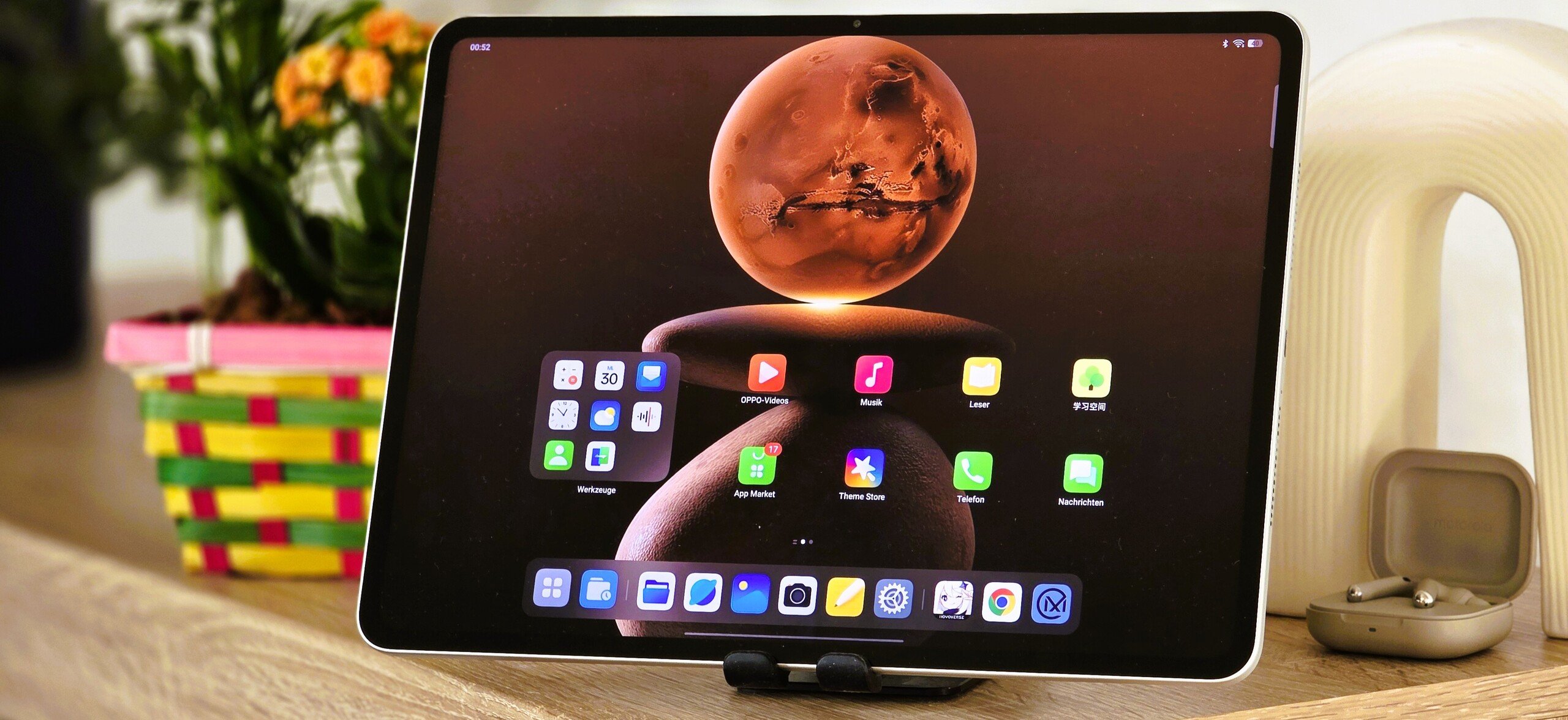


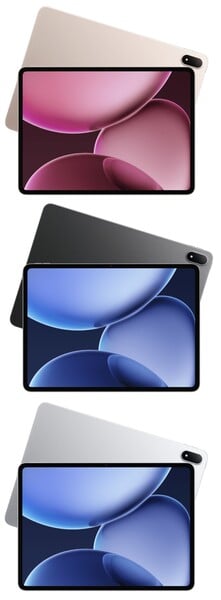
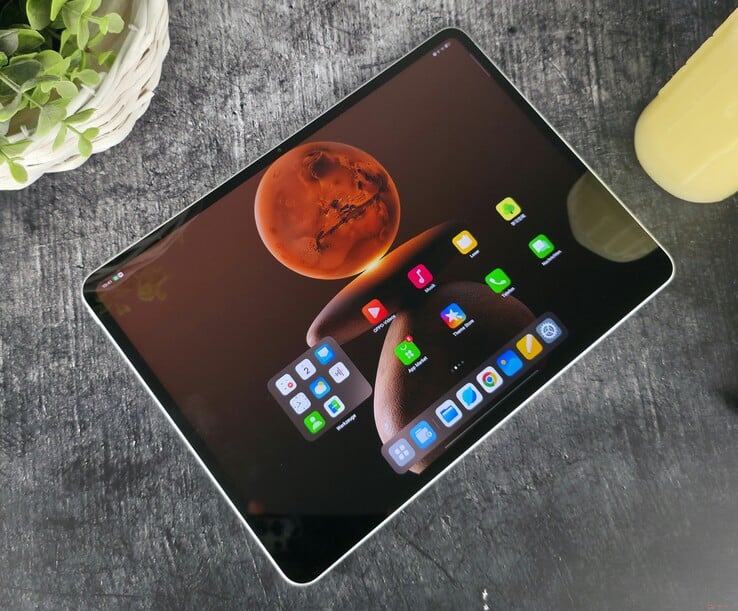






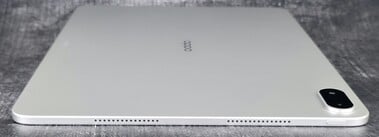
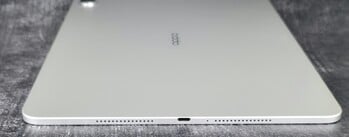

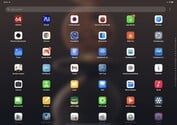













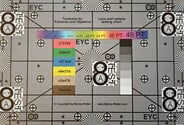



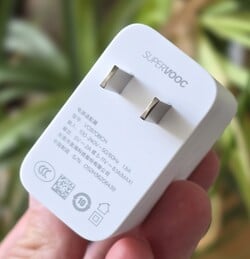



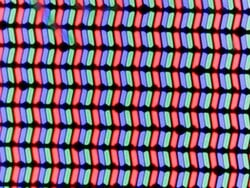
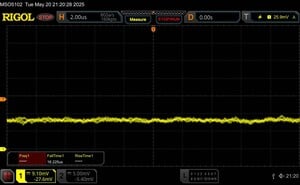
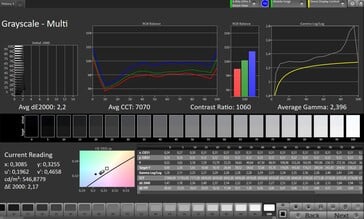
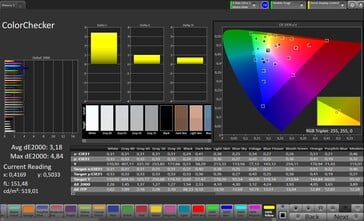
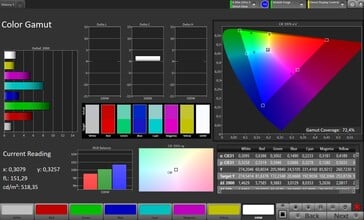
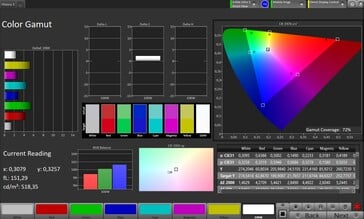
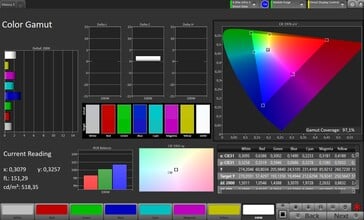

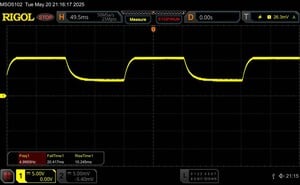
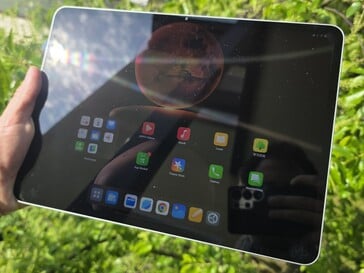
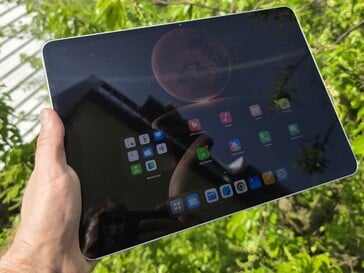


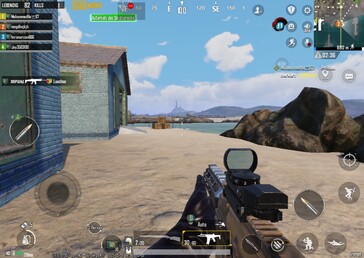

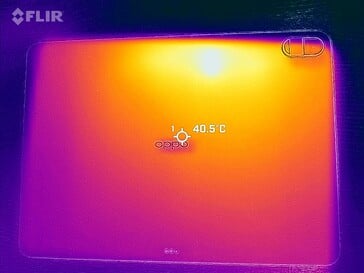
 Total Sustainability Score:
Total Sustainability Score: 




